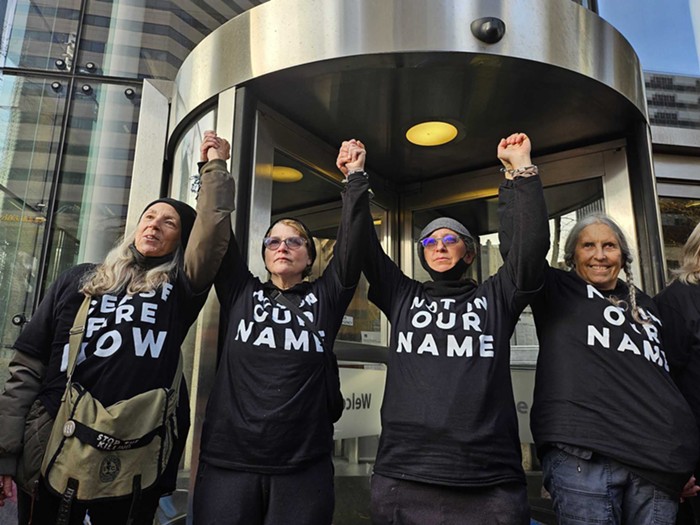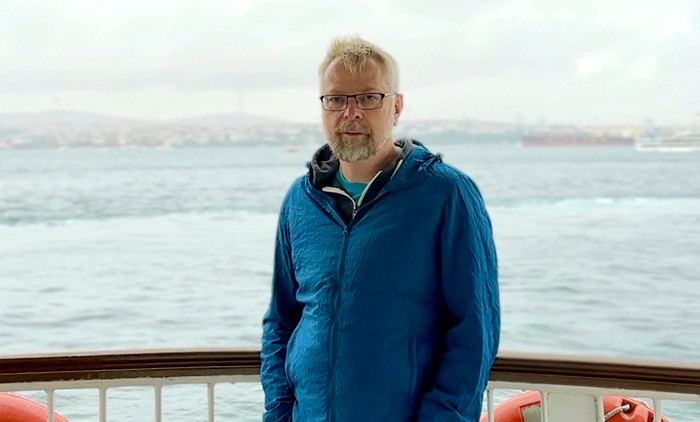If Seattle has faced a single divisive urban-planning issue in recent years, it's the waterfront. Namely, the enormous chunk of concrete that separates Seattle's waterfront from the rest of the city: the Alaskan Way Viaduct. The vulnerable double-decker freeway, carrying over 100,000 cars a day, is a catastrophe just waiting for the next seismic tremor. Now the city has found its man to mediate a solution to this and dozens of other urban-planning puzzles.
"I think the waterfront is very exciting," says Raymond Gastil, who on August 25 began his position as Seattle's new planning director, overseeing a staff of roughly 45 people at the city's Department of Planning and Development (DPD). "But the question is, 'How do we make it better?'"
Best known for his book Beyond the Edge: New York's New Waterfront, Gastil's insight into the underused riverfronts along New York City landed him the job of director of that city's Manhattan office, where he has served the last three years. He was also the founding director of the urban-growth think tank Van Alen Institute.
"It's a pretty big job," says Diane Sugimura, DPD's director, on Gastil's new role. (San Francisco pilfered our previous planning director, John Rahaim, in November.) Gastil will be overseeing citywide land-use policies, neighborhood growth strategies, parks placement, building heights, and urgent planning challenges—including development around the new light-rail stations and envisioning a city without a viaduct.
Known for being media shy, Gastil nevertheless speaks quickly and deftly. He won't commit to any one waterfront plan—The Stranger reached him six hours into his first day on the job—however, he does repeatedly refer to a proposal sketch by DPD that depicts a viaduct-free Alaskan Way. He also favorably cites San Francisco's decision not to rebuild a similar structure along its waterfront after the 1989 Bay Area earthquake turned it into a human juicer. The reconnection of San Francisco with its waterfront is considered an enormous success.
"It takes a great deal of dialogue," Gastil says about his philosophy for working with residents concerned about traffic and various government agencies concerned with turf. "You just have to believe that there is a way to accommodate change and preserve what makes Seattle special." He adds, "Everyone may not agree on that, but you have to try."
The waterfront may be the most contentious, unwieldy debate with the most stakeholders—but it will be only one of Gastil's challenges.
His first task in Seattle will be finishing the nearly complete plan to rezone south downtown—currently populated with parking lots and squat warehouses—increasing residential density around the King Street Station, the region's future commuter-rail hub. In addition, Gastil must tackle sensitive density issues around new light-rail stations in neighborhoods, such as those in Roosevelt and Southeast Seattle.
"We haven't had a major discussion about what will be happening around major stops on those lines as far as housing," says city council member Sally Clark, chair of the council's land-use committee. While Clark is unsure when the viaduct debate will rise again, she notes that Gastil's best contribution may be envisioning and articulating how the city could function without it.
"It is our hope that Ray will bring with him some great ideas about what the Seattle waterfront will be in its next life," Clark says.
However, not every aspect of Gastil's background cheers urban development enthusiasts. During his tenure in Manhattan, he was involved in the vetting of redevelopment of the West Side rail yard. The property, owned by the transit authority on the isle's Upper West Side, was the subject of bidding by several developers. The winner proposed several towers last year, both commercial and residential, surrounded by greenery and walking paths. The concept has historically been referred to as "towers in the park"—a design scheme popularized by French planner Le Corbusier and widely reviled for filling cities with impractical, empty, wind-swept plazas and impersonal skyscrapers. The New York Times writes that the proposal's "tired urban planning formulas should force a serious reappraisal of the public-private partnerships that shape development in the city today."
While Gastil should not take all the blame for the West Side rail yards, he was "involved in the work of getting toward guidelines that allowed the submissions to be made," he says. But he's focused now on Seattle, where he attended Lakeside School.
"That was then and this is now," says Gastil. ![]()


















